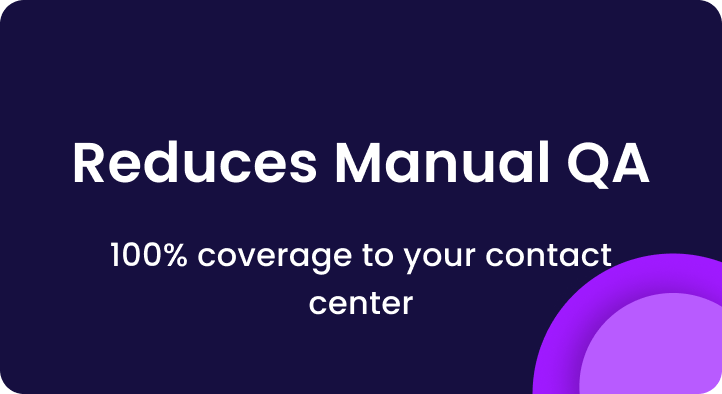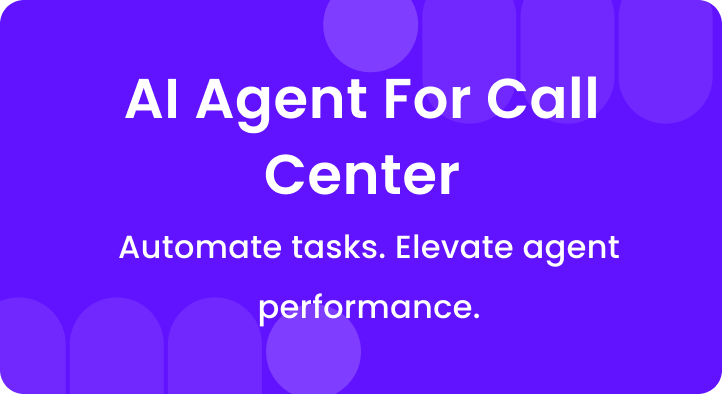In today’s fast-changing business world, customers expect top-notch service, and call centers are at the forefront of meeting those expectations.
The competition to impress customers and keep them coming back is tougher than ever.
In this crucial environment, call centers must step up and make sure their agents provide outstanding service in every customer interaction.
Enter the game-changer: QA call monitoring forms.
These days, speech analytics in call centers are turning the complete monitoring process.
These innovative tools have become the secret weapon for call centers seeking to elevate their performance and create unforgettable customer experiences.
With Quality Assurance (QA) programs at their core, call centers armed with well-designed monitoring forms are rewriting the rules of customer engagement.
Join us as we delve into the dynamic world of call center excellence, uncovering the hidden gems of QA call monitoring forms.
Table of Contents
A. What is a quality assurance call monitoring form?
A Quality Assurance call monitoring form is a structured document used in call centers to evaluate and track agent performance during customer interactions.
The data collected through these forms helps call center managers to make informed decisions, recognize top-performing agents, and ensure a consistent and positive customer experience across all interactions.
These forms are invaluable tools that drive continuous improvement and ultimately contribute to a call center’s overall success and reputation.
The primary reasons why QA call monitoring forms are used:
- Evaluating the performance of customer service representatives during phone interactions with customers.
- Identifying specific areas where agents may need additional training or coaching.
- Ensuring that representatives follow the necessary procedures and stay compliant with industry standards.
- Driving continuous improvement in agent performance and customer satisfaction.
B. Essential elements of a contact center QA form
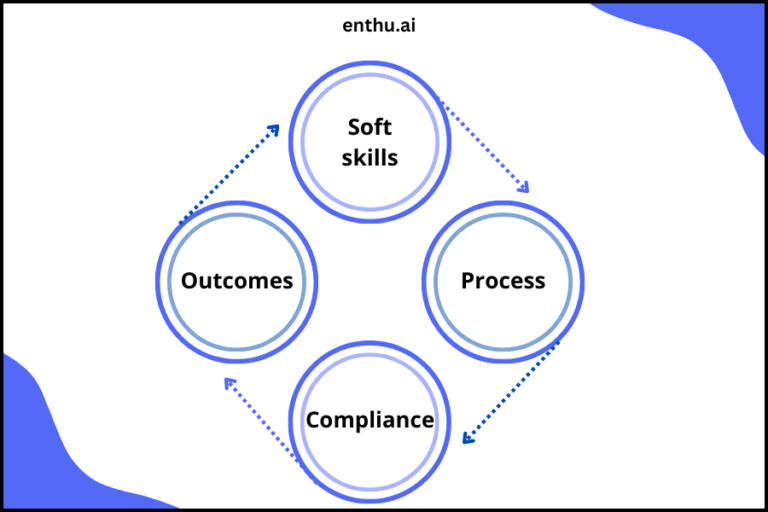
In a Call Center Quality Assurance Form, you need to assess several essential skills to ensure exceptional agent performance.
By evaluating these essential skills in your Call Center QA Form, you can gain a comprehensive understanding of agent performance.
1. Soft skills
When evaluating agents, focus on their interpersonal and communication abilities.
Look for empathy, active listening, politeness, friendliness, and the ability to handle challenging customers with patience and professionalism.
These soft skills build rapport, foster customer trust, and leave a lasting positive impression.
2. Process
Assess whether agents follow your call center’s standard operating procedures and guidelines during customer interactions.
Verify if they adhere to call scripts, use correct issue resolution processes, and follow predefined steps for data collection and customer handling.
Ensuring process adherence enhances consistency, reduces errors, and promotes efficient call handling.
3. Compliance
Make sure agents adhere to your company’s policies, industry regulations, and legal requirements while interacting with customers.
Verify if they provide accurate information, protect customer data, and follow all relevant guidelines and regulations.
Compliance is vital for maintaining ethical practices, customer trust, and safeguarding your call center’s reputation.
You can utilize conversation intelligence software that allows for comprehensive monitoring of every interaction, enabling the identification and prompt alerts to agents and supervisors regarding potential compliance issues.
4. Outcomes
Measure the effectiveness of agents’ problem-solving and issue resolution capabilities.
Track first-call resolution rates, customer satisfaction scores, and how well they meet customers’ needs promptly and efficiently.
High-quality outcomes increase customer loyalty, fewer follow-up calls, and overall customer satisfaction.
C. How to build an effective QA form for call center monitoring
To create an effective Quality Assurance call monitoring form, call center managers should follow a step-by-step process:
1. Defining evaluation criteria and objectives
The first step in building a QA form for call center monitoring is clearly outlining the evaluation criteria and objectives.
It’s important to identify specific behaviors and actions demonstrating proficiency in each skill to ensure clarity and consistency in evaluations.
Objectives may include:
- Improving customer satisfaction
- Enhancing first-call resolution
- Ensuring compliance with quality standards
- Boosting Agent Performance
By establishing well-defined objectives for each criterion, and aligning them with the call center’s overarching goals and customer service standards, you can ensure that the evaluation process remains focused and purposeful.
In doing so, the form becomes a powerful tool for guiding agents toward desired outcomes and ultimately enhancing customer satisfaction.
Enthu.AI helps contact center evaluate their agent performance and create personalized coaching sessions.
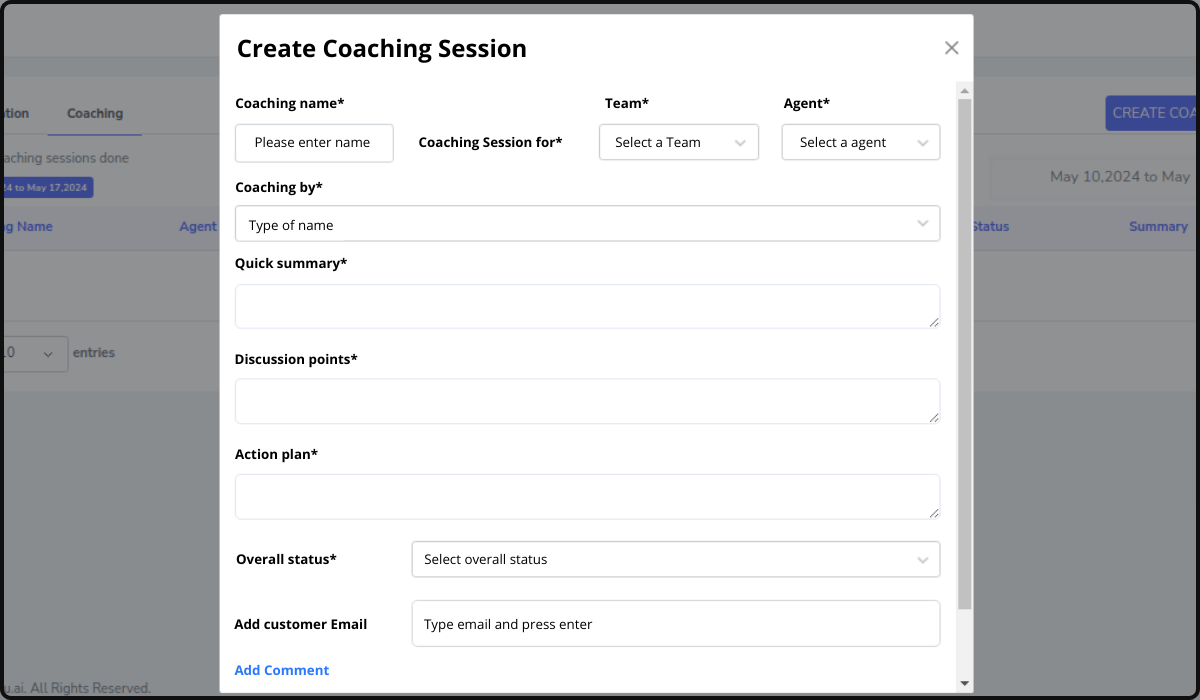
2. Structuring the form with clear sections and rating scales
To facilitate efficient evaluation, it’s crucial to divide the QA form into distinct sections, each addressing different aspects of the call, such as agent behavior, issue resolution, and adherence to processes.
Section 1: Agent behavior
- Rating scale for soft skills, such as empathy and communication.
- Observing friendliness, politeness, and professionalism during interactions.
Section 2: Issue resolution
- Rating scale for problem-solving capabilities.
- Measuring first-call resolution rates and effectiveness in resolving customer issues.
Section 3: Process adherence
- Rating scale for following call center procedures and scripts.
- Assessing data collection and compliance with company guidelines.
This segmentation helps evaluators to focus on specific areas and makes the form more organized.
Additionally, using user-friendly rating scales or scorecards simplifies the evaluation process, allowing for consistent and objective assessments.
Assigning numerical values or descriptive labels to each rating further enhances the form’s precision, enabling evaluators to quantify agent performance accurately.
Enthu.AI gives an option to fill in the (customized) feedback form and score agents based on different category, this saves times and improves overall efficiency.
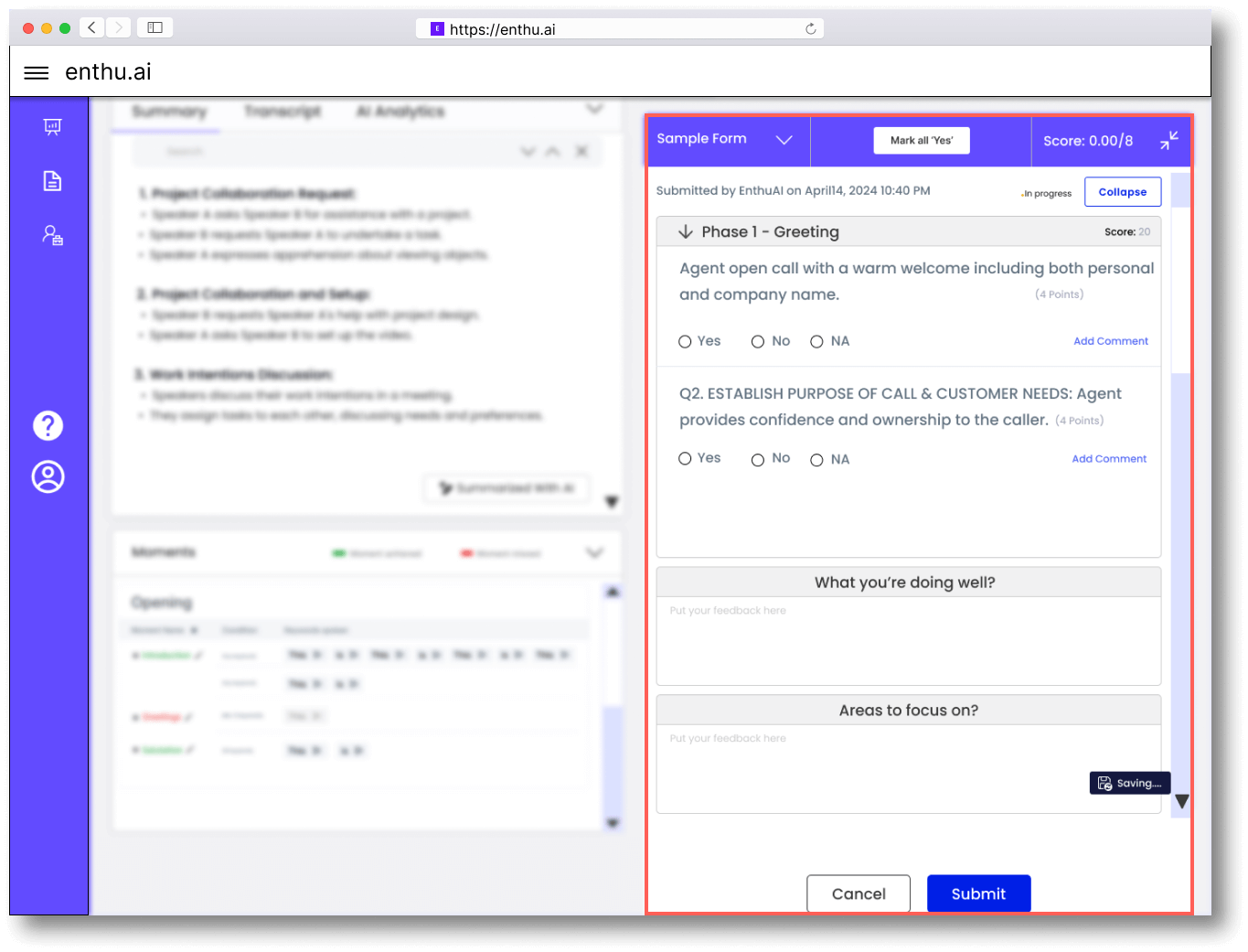
3. Incorporating specific performance metrics and expectations
Quantitative metrics are essential in a Quality Assurance form as they provide tangible data for agent performance evaluation.
Including specific performance metrics helps track key areas that impact customer satisfaction and overall call center effectiveness.
By setting clear performance expectations for each metric, you establish benchmarks for agent performance, allowing you to identify top performers and areas that need improvement.
- Average response time: Performance expectation: Respond to customer inquiries within the set time frame to ensure prompt assistance.
- Call duration: Performance expectation: Aim for reasonable call durations to optimize call center efficiency and reduce customer wait times.
- Issue resolution time: Performance expectation: Strive for quick and effective issue resolution to enhance customer satisfaction.
Enthu.AI analyses 100+ calls in a minute so that the call centers can improve their KPIs such as CSAT and NPS scores.
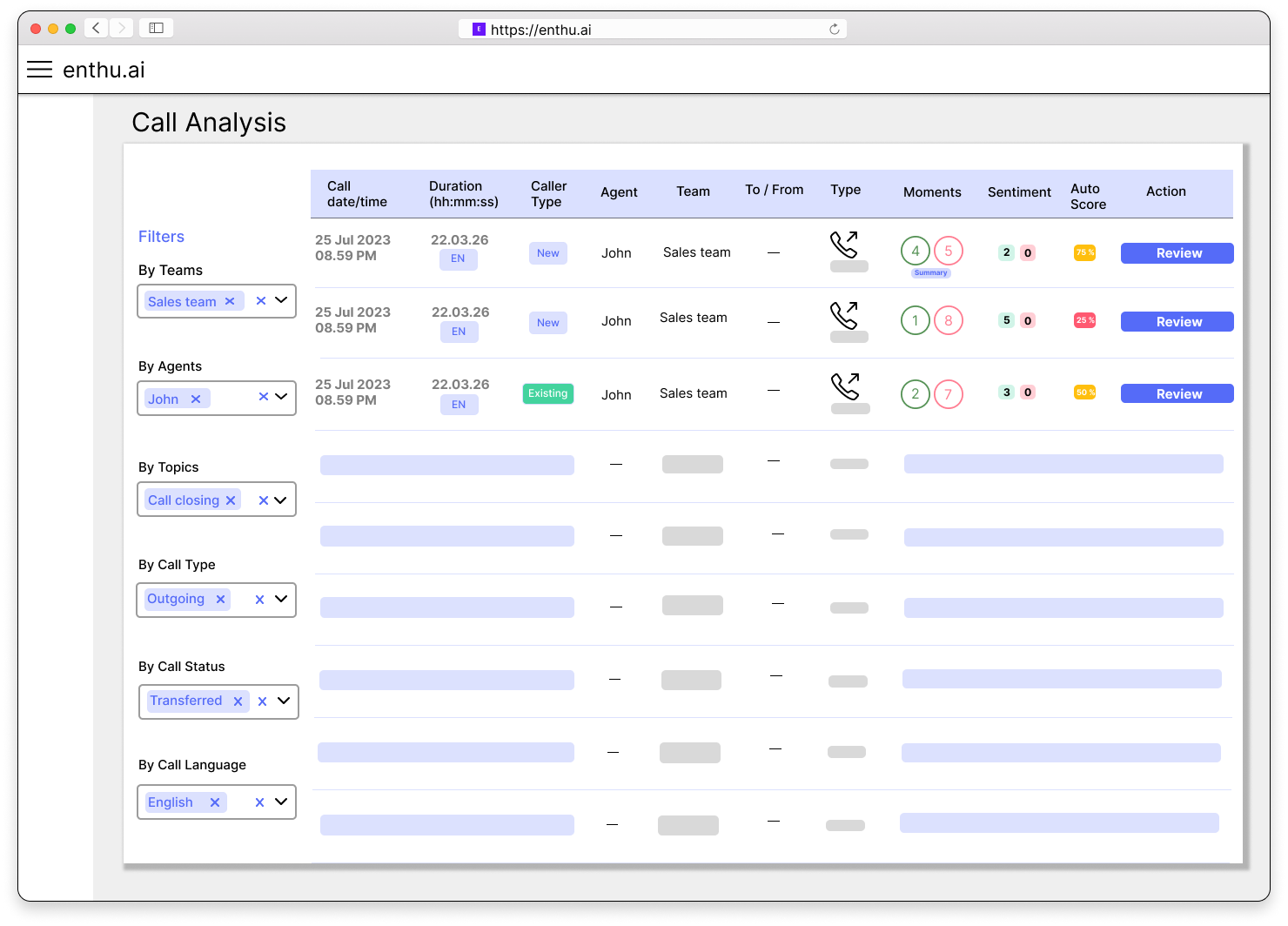
4. Including open-ended questions for qualitative feedback
Alongside quantitative evaluations, incorporating open-ended questions in the QA form allows evaluators to provide qualitative feedback and offer suggestions for improvement.
These open-ended questions encourage detailed insights and provide with valuable agent feedback to enhance performance.
You can use speech analytics tools like Enthu.AI to get actionable insights to drive higher agent performance.
- Encourage evaluators to share specific examples of exceptional or challenging interactions.
- Ask for feedback on areas where agents excel and areas they can improve.
- Seek targeted training or coaching suggestions to enhance agent skills and customer interactions.
Enthu.AI enables your call monitoring process 10X faster.
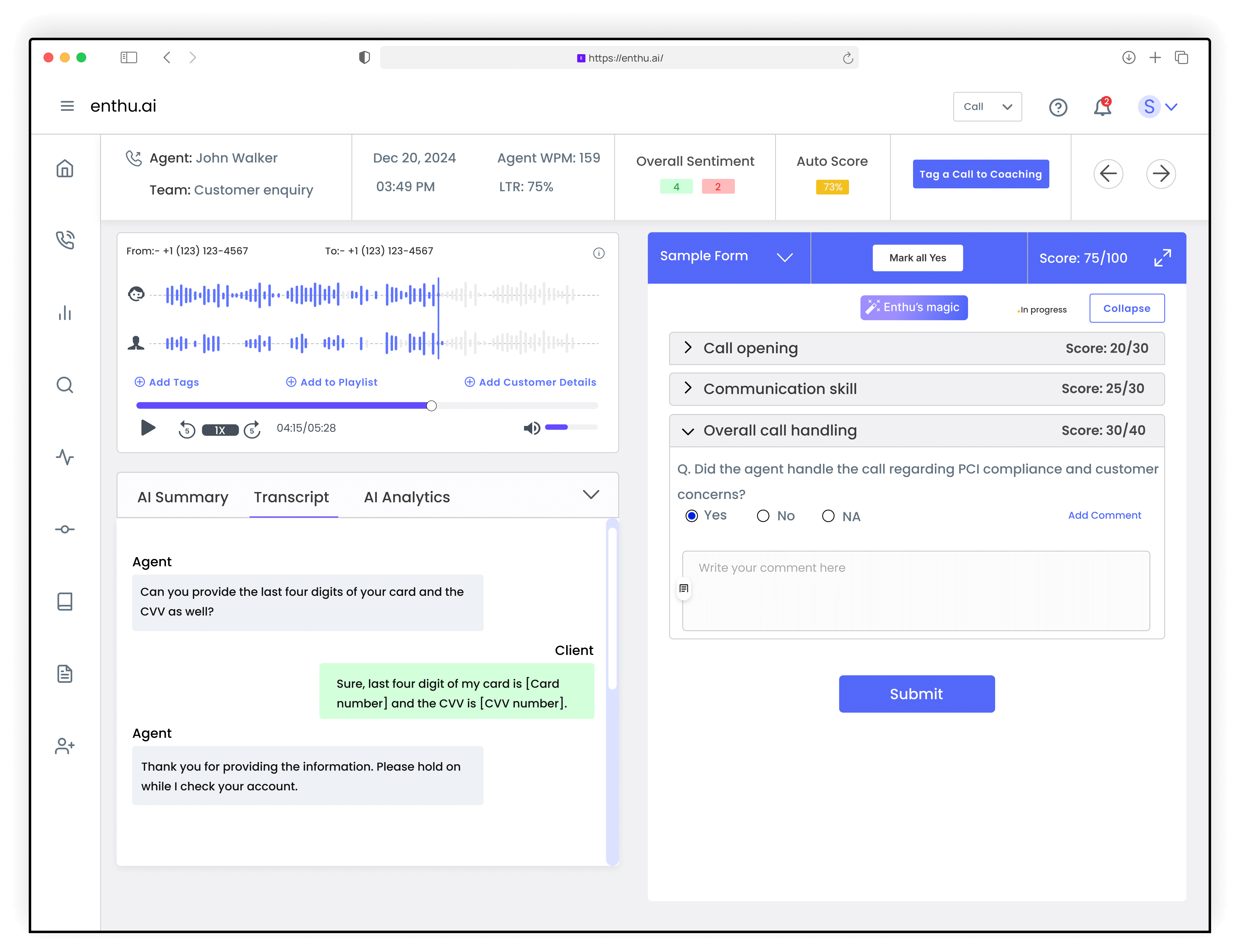
5. Ensuring clarity of instructions for evaluators
To maintain consistency and objectivity in evaluations, it is crucial to provide clear instructions to evaluators.
Clear instructions help standardize the evaluation process, ensuring all agents are evaluated fairly and on the same criteria.
- Clearly define the purpose of the QA form and its role in agent performance assessment.
- Provide guidelines on how to use the rating scales and agent scorecards effectively.
- Offer examples of desired behaviors and outcomes for each criterion to clarify expectations.
Detailed Evaluation Stats at Enthu.AI
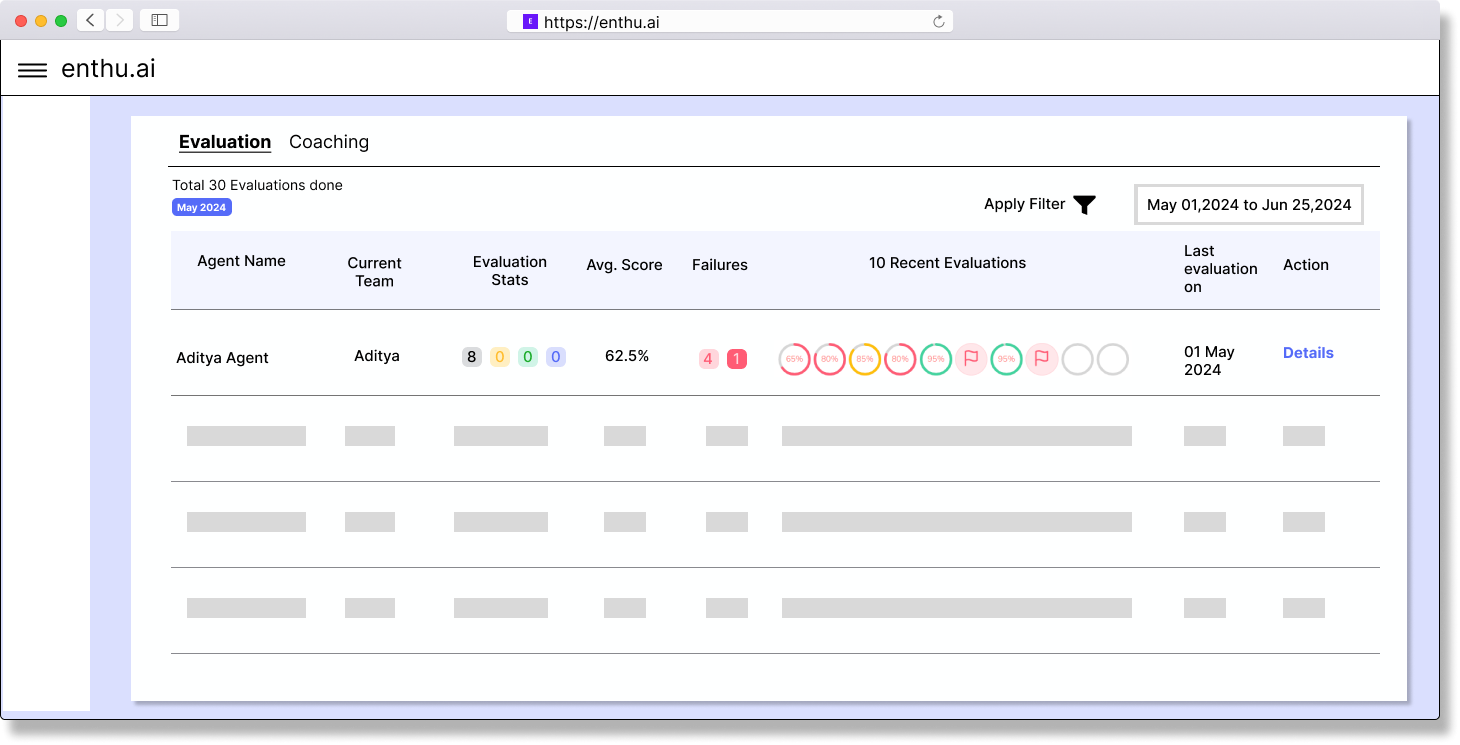
6. Reviewing and refining the form based on feedback and evolving needs
Continuous improvement is vital for the effectiveness of a Quality Assurance form.
Regularly gathering feedback from evaluators and stakeholders allows for form refinement and adaptation to changing business requirements.
Solicit feedback from evaluators on the form’s usability and effectiveness. Analyze data and trends to identify areas where the form can be improved.
Be open to making necessary adjustments to the form to ensure it aligns with current call center objectives and goals
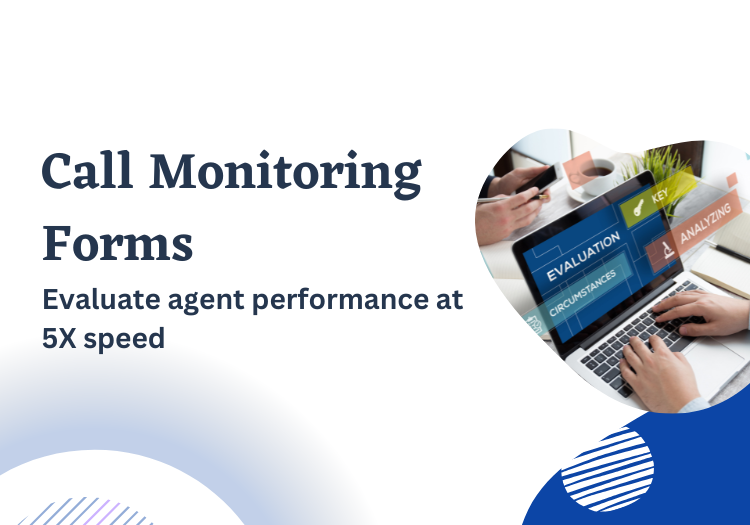
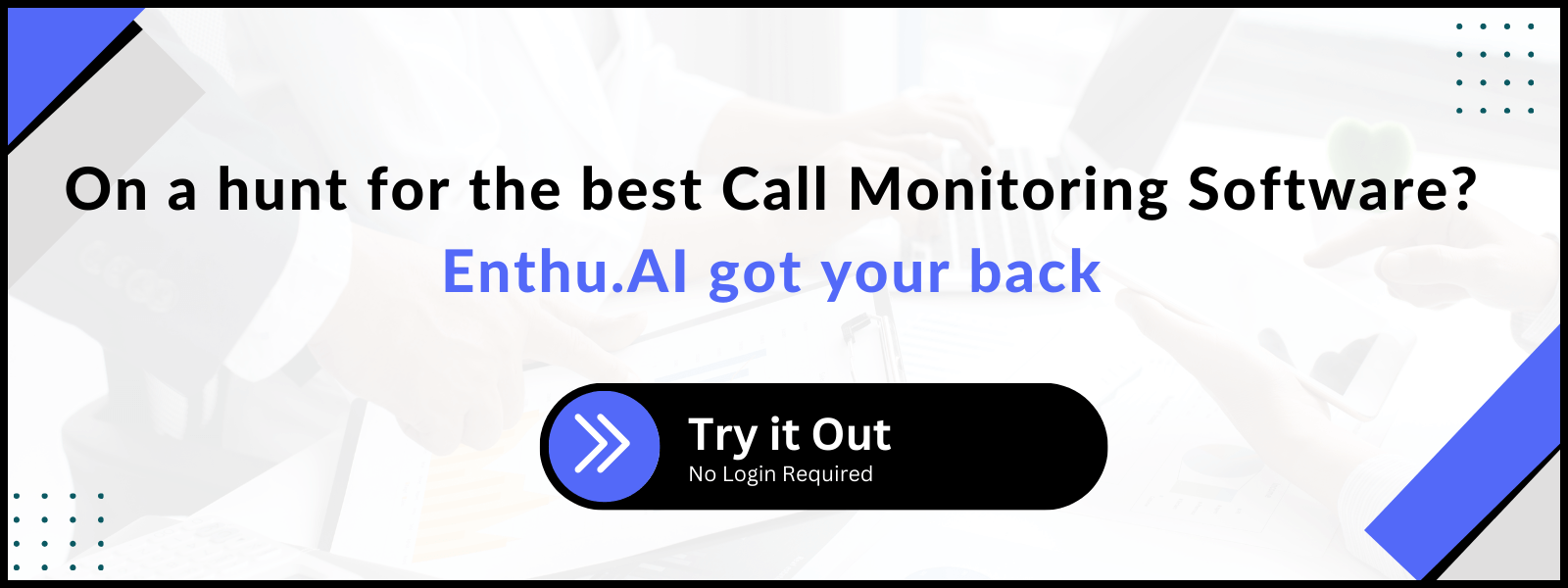
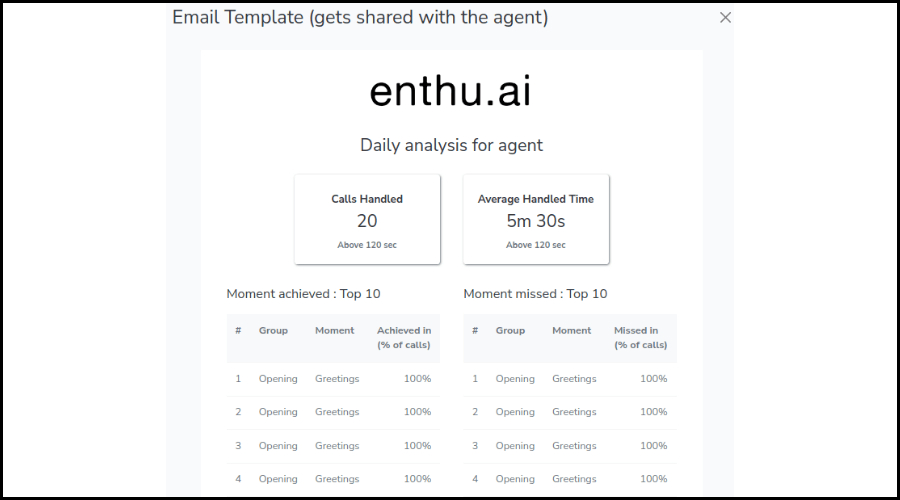


 On this page
On this page